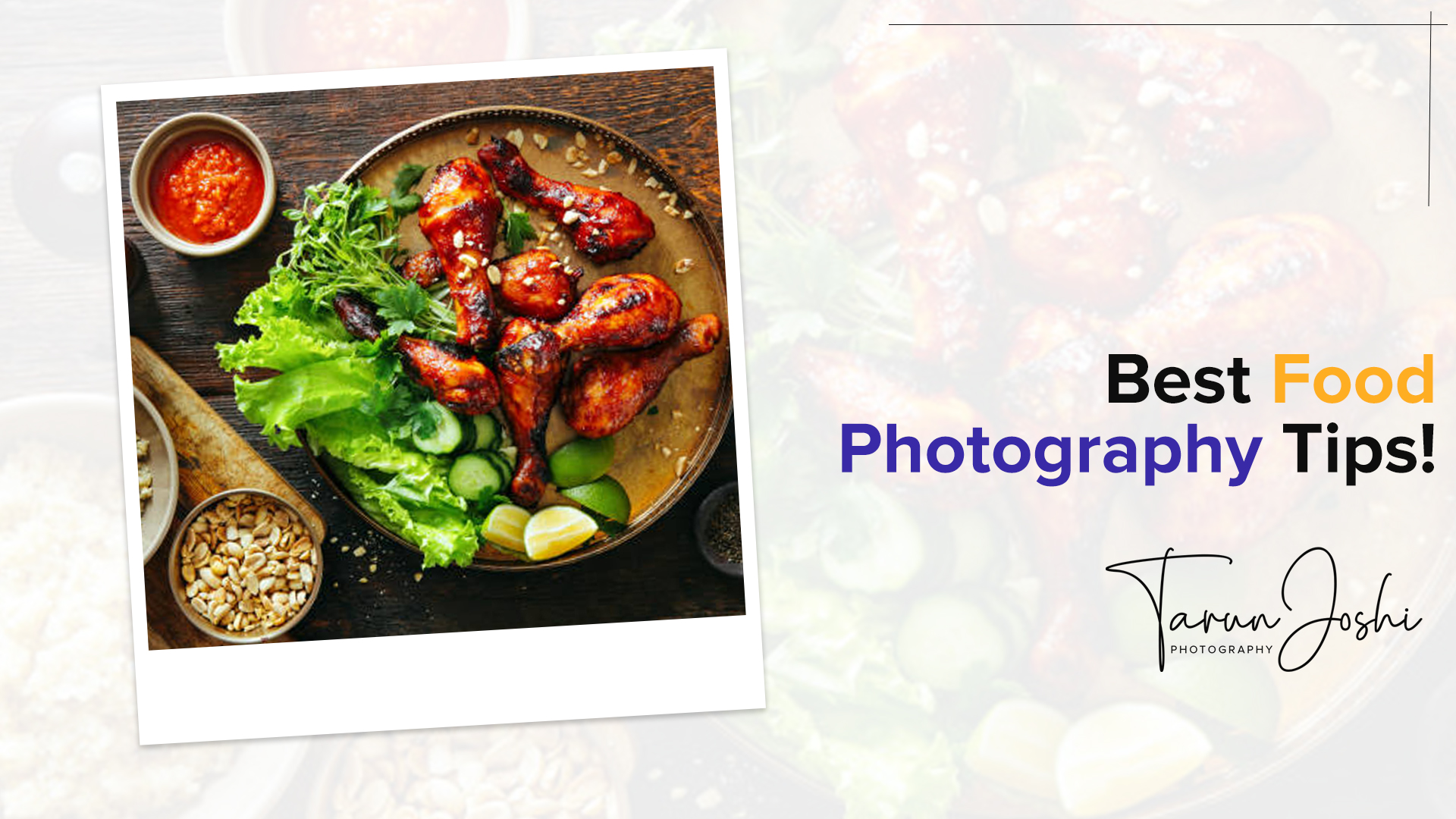Don’t stop learning new tricks for enhancing your food photography. Take photos and do not be afraid to experiment with the items you’re using or the lighting to create a fresh appearance. It may be challenging to produce the kind of stunning food images you’ve imagined if you’re a photographer or blogger who is just learning about food photography. Here are the best food photography tips for a perfect look suggested by Tarun Joshi – best wedding photographer in Chandigarh.
Best Food Photography Tips

The Surroundings:
Designing the area surrounding the meal itself is crucial to taking excellent food photos. A solitary thing in the midst of an empty dish is just as uninteresting as a plate in the middle of an empty table, which is frequently distractingly austere. To add a degree of artistic finesse to food, chefs frequently utilize garnishes, side dishes, sauces, and drizzles.
Although it may be tempting, overfilling the plate won’t appear good on video. Too much food on the plate will simply make it more difficult for the audience to maintain attention to the crucial details.
The Ingredients matter:
Food photography techniques are crucial to capturing the food’s aesthetic; therefore, you must ensure that each item is in pristine shape. Don’t even consider trying to figure out an angle that may cover up wilted lettuce in the salad or a smashed tomato that can destroy the shot.
Cook first, Shoot later- A Big No!
Shooting after the food has been prepared is simply too late since you’ll miss a lot of chances to get great culinary photography photos. Start far earlier, when the ingredients are being prepared, rather than after the dish has been cooked!
When something is cooked, it sometimes doesn’t look very good (think of boring soup, pasta with white sauce, or brown dishes like chili, beans, or stuffing). When it still appears flat and uninteresting after adding a little garnish, you might try photographing the cooking process. Sometimes the cooked meal appears less attractive than the raw or partially cooked elements.
The Height Experiment:
You don’t even need to go higher; just arranging items on a wrinkly kitchen towel adds texture and divides the space by introducing visual contrasts or levels. When filming straight on or from various angles, adding height may provide a natural frame that you can work off of.
The ideal approach is to make everything straightforward and orderly, especially the props. No matter how attractive the tableware or china may be, you should avoid using them in photographs since the food should be the main subject of the image. Use muted hues for your backdrops and props, and let the food take center stage.
Pen it on Paper:
Don’t worry about the specifics; just quickly sketch down your broad concept. When you’re drawing, pay attention to the narrative you want to convey, consider the items you’ll use, select a color scheme, and make notes on the lighting and all other compositional elements. Instead of randomly shooting and hoping for a decent shot, this will assist you in bringing to life the mental image you had when originally planning the photo shoot and photographing it.
Background:
One of the best pieces of advice is to think about taking pictures of your dish on an outside table in a natural location for a distinctive environmental perspective on food photography. Picnics, backyards, and courts make excellent locations for food photography because they create a fascinating mood and add to the narrative.
The Right Angle:
There is no one perspective that works for everyone. Different dishes are best viewed from different perspectives.
A taco or burger, for instance, looks better from the side whereas this cheese and fruit tray looks best from above. However, this does not imply that there is only one angle that is effective for each dish. Instead, in order to help people envision, you sometimes need to display the dietary needs from several angles.

